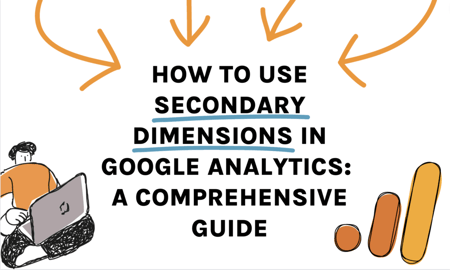Advanced SEO Techniques: Leveraging Secondary Dimensions for Strategic Advantage
Advanced SEO Techniques: Leveraging Secondary Dimensions for Strategic Advantage
Blog Article
Optimize Your Reporting Precision With Second Dimensions
Additional dimensions offer a portal to boosting reporting accuracy by giving a complex lens with which to see data. As we get started on this journey of leveraging secondary measurements, the landscape of reporting precision beckons with guarantees of boosted clearness and tactical decision-making.
Relevance of Secondary Measurements
Using secondary measurements is crucial for improving the depth and granularity of reporting understandings in data analysis. By integrating secondary measurements right into information evaluation procedures, services can get an extra comprehensive understanding of their performance metrics. These extra dimensions provide a more thorough sight of the primary data, permitting for an extra nuanced analysis of fads and patterns. Secondary dimensions enable experts to sector and filter information based upon certain requirements, supplying an extra tailored and targeted evaluation.
In addition, secondary measurements aid in determining correlations and partnerships that might not be quickly evident when analyzing information with only primary measurements. This deeper degree of understanding can bring about more educated decision-making and tactical preparation within an organization. By leveraging additional measurements properly, services can uncover concealed possibilities, identify areas for enhancement, and optimize their total performance.
Applying Secondary Dimensions
To include second dimensions successfully into data analysis processes, businesses must embrace an organized technique that straightens with their coverage purposes and analytical objectives. Applying additional dimensions involves choosing the ideal measurements that provide much deeper understandings into main data metrics.
Moreover, organizations require to ensure that the selected secondary dimensions relate to the primary information and supply significant context without triggering information overload. Executing second measurements also requires defining clear logical concerns that the added measurements will certainly help address. By structuring the implementation procedure around these considerations, businesses can maximize the worth stemmed from second measurements and boost the accuracy and depth of their reporting.
Analyzing Data With Second Measurements

One key element of evaluating data with additional measurements is to ensure that the picked dimensions straighten with your details analytical objectives. Picking the right second measurements can provide context and nuance to your key information metrics, enabling you to draw even more precise conclusions and make educated decisions based on the understandings gained.
In addition, leveraging secondary measurements effectively can assist in recognizing outliers, understanding the effect of various variables on your essential efficiency indications, and gaining an extensive sight of your information landscape. By delving into information with second dimensions, you can improve the deepness and quality of your analysis, bring about more robust coverage and workable outcomes.

Enhancing Insights With Additional Measurements
Checking out data through additional dimensions not only grows evaluation however likewise magnifies the capacity for discovering important insights that can considerably enhance reporting accuracy. By including second measurements to your records, you can acquire a more comprehensive understanding of the partnerships in between different data factors. When examining data with main measurements alone., this improved perspective allows you to identify patterns, patterns, and correlations that may have been forgotten.

Basically, leveraging additional measurements empowers you to draw out richer insights from your data, allowing you to make more educated choices and optimize your reporting precision.
Best Practices for Second Dimensions
Utilizing secondary dimensions efficiently needs cautious consideration of essential methods to improve information evaluation and reporting accuracy. When carrying out second measurements, it is essential to align them with your primary metrics to obtain significant insights.
An additional crucial practice is to explore different combinations of additional and main measurements to uncover distinct correlations and patterns within your data. This iterative method can reveal valuable insights that might have been overlooked otherwise. Additionally, it is very important to routinely examine and improve your second measurement selections to guarantee they remain relevant and aligned with your progressing reporting demands.
Furthermore, image source documenting the reasoning behind your selection of second dimensions can offer context for future evaluation and assist in collaboration within your group. By complying with these ideal methods, you can make the most of the performance of additional measurements in improving your reporting precision and driving notified decision-making.
Conclusion
Including additional measurements in information analysis is crucial for making best use of reporting accuracy and gaining much deeper insights right into performance fads. By tactically picking additional information points, experts can uncover surprise correlations and make educated decisions. secondary dimensions. Applying ideal methods for secondary measurements improves the deepness of analysis and boosts the significance of reporting end results. This method eventually leads to a lot more exact and nuanced interpretations of data, leading to even more enlightened decision-making.
Furthermore, secondary dimensions assist in recognizing correlations and relationships that may not be quickly apparent when analyzing information with just key dimensions. Executing secondary dimensions entails selecting the ideal measurements that provide deeper insights try these out into main data metrics. Applying additional dimensions also requires specifying clear analytical inquiries that the additional dimensions will assist answer.When assessing data with secondary measurements, it is imperative to concentrate on extracting valuable insights that match primary data metrics. By including second dimensions into your evaluation, you can discover patterns, fads, and relationships that might not be evident when looking at the information from a main measurement alone.
Report this page